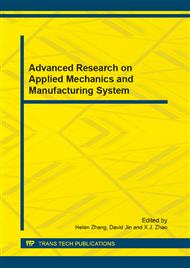p.271
p.276
p.280
p.285
p.289
p.293
p.298
p.302
p.306
A Finite Element Simulation of Mold Filling Process in Resin Film Infusion Based on Material Properties and Mechanics Properties
Abstract:
A finite element method (FEM) has been developed to simulate the isothermal resin infusing process in resin film infusion. The FEM is based on conservation of resin mass at any instant of time and is objective of resin film infusion (RFI) fiber impregnation and mold filling. The developed computer code was able to simulate the resin infusing visually. A numerical example presented here demonstrated that compared with traditional finite element/ control-volume (FE/CV), FEM is physically accurate and computationally efficient.
Info:
Periodical:
Pages:
289-292
Citation:
Online since:
December 2012
Price:
Сopyright:
© 2013 Trans Tech Publications Ltd. All Rights Reserved
Share:
Citation:


